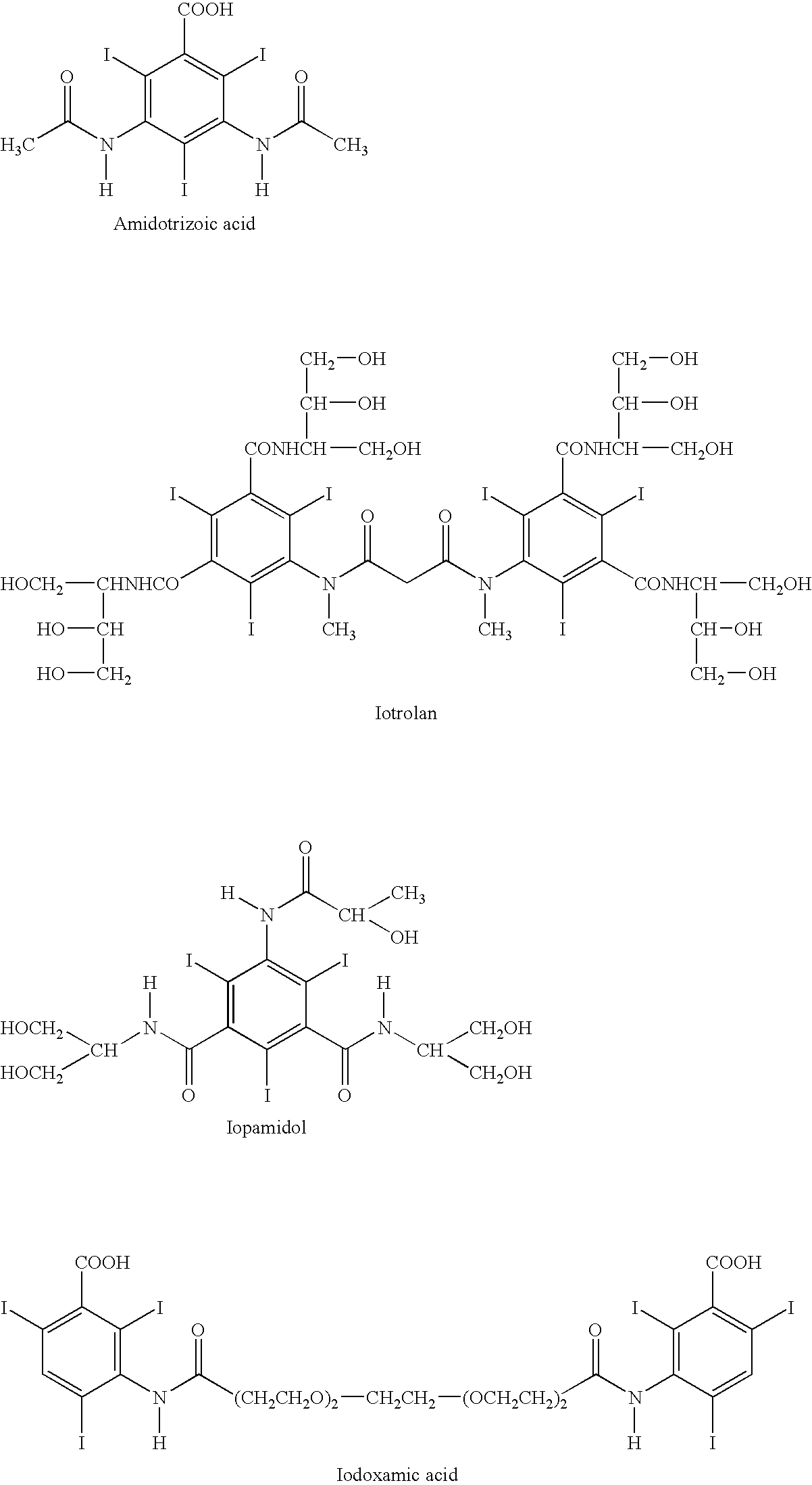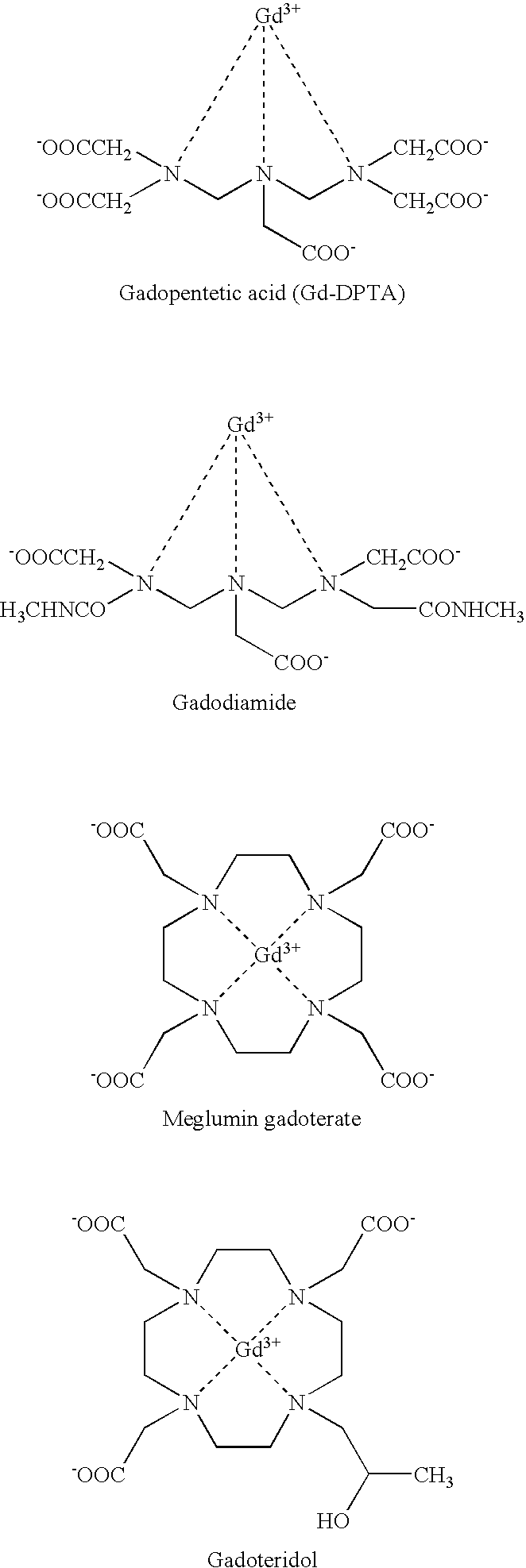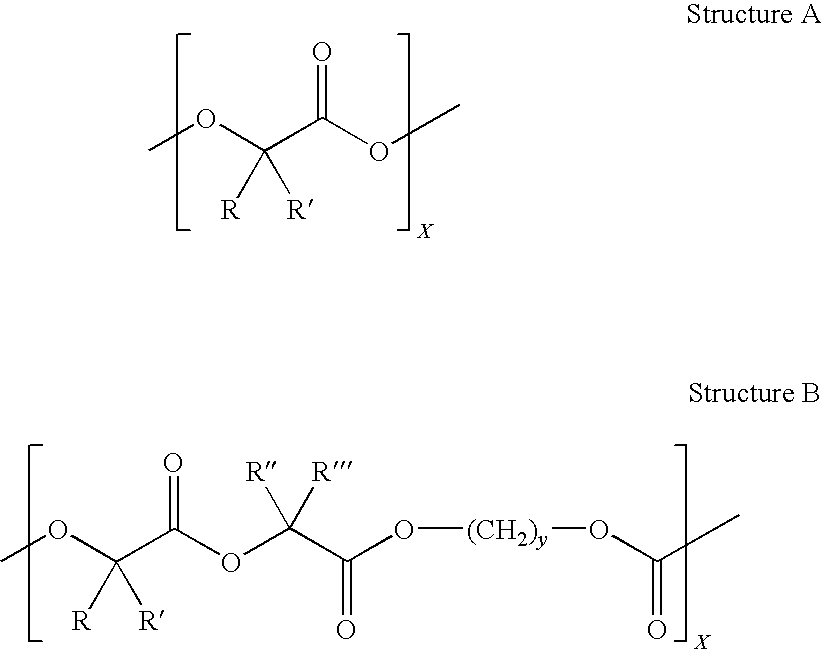Biodegradable vascular support
a vascular support and biodegradable technology, applied in the field of biodegradable stents, can solve the problems of cardiac infarction, needed rigidity of these segments, and already disintegration
- Summary
- Abstract
- Description
- Claims
- Application Information
AI Technical Summary
Benefits of technology
Problems solved by technology
Method used
Image
Examples
example 1
[0135]A stent consists of:
90% (w / w) of zinc6% (w / w)of magnesium1% (w / w)of calcium2% (w / w)of yttrium1% (w / w)of other metals, metal salts, non-metals, carbon, sulphur,nitrogen, oxygen, hydrogen.
[0136]The stent according to example 1 is coated in a dipping process with a solution of a polyglycol and doxorubicin. Upon drying, the dipping process is repeated another two times.
example 2
[0137]A stent consists of:
46% (w / w)of zinc46% (w / w)of magnesium 6% (w / w)of yttrium 2% (w / w)of other metals, metal salts, non-metals, carbon, sulphur,nitrogen, oxygen, hydrogen.
[0138]The stent according to example 2 is coated in a spraying process at intervals with a solution of a polylactide and the active agent paclitaxel in chloroform. Upon drying, the polymeric coating is fused at discrete spots by means of a temperature transmitter in order to form holes. Then the holes are filled with a solution of paclitaxel in DMSO and dried.
example 3
[0139]A stent consists of:
75% (w / w)of zinc 15% (w / w)of calcium 4% (w / w)of yttrium0.7% (w / w)of manganese0.8% (w / w)of iron4.5% (w / w)of other metals, metal salts, non-metals, carbon, sulphur,nitrogen, oxygen, hydrogen.
[0140]The stent according to example 3 is coated in a spraying process at intervals with a solution of a polygluconate in methylene chloride. Upon drying, the polymeric coating is fused at discrete spots by means of acid treatment in order to form holes. Upon thorough removal of possibly remaining acid through several washes and dryings of the stent the holes are filled by means of a pipette with an ethanolic solution containing 30% by weight of paclitaxel and the contrast medium iopromide. Subsequently, drying occurs under soft airflow at room temperature.
PUM
| Property | Measurement | Unit |
|---|---|---|
| thickness | aaaaa | aaaaa |
| diameter | aaaaa | aaaaa |
| pH | aaaaa | aaaaa |
Abstract
Description
Claims
Application Information
 Login to View More
Login to View More - R&D
- Intellectual Property
- Life Sciences
- Materials
- Tech Scout
- Unparalleled Data Quality
- Higher Quality Content
- 60% Fewer Hallucinations
Browse by: Latest US Patents, China's latest patents, Technical Efficacy Thesaurus, Application Domain, Technology Topic, Popular Technical Reports.
© 2025 PatSnap. All rights reserved.Legal|Privacy policy|Modern Slavery Act Transparency Statement|Sitemap|About US| Contact US: help@patsnap.com



